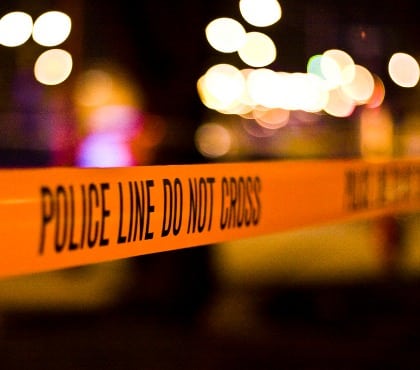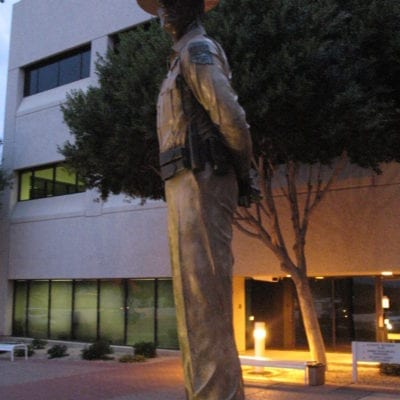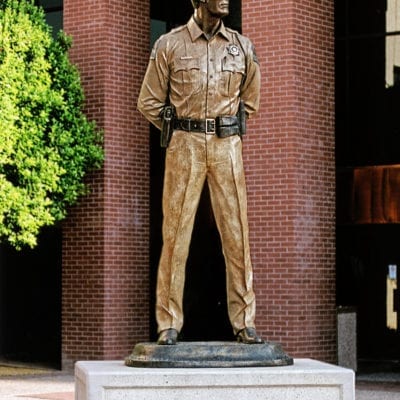Author: Force Science Institute
Reprinted with permission from Force Science News #361
A recent officer-involved shooting (OIS) in rural Iowa is typical of many that occur across North America. The sheriff’s office involved hadn’t experienced an OIS in at least three decades. The county prosecutor, responsible for evaluating legal justification, hadn’t handled one in 17 years.
“In locales other than large metropolitan areas, an OIS tends to be a once-in-a-career event,” says Mike Krapfl, special agent in charge in the Major Crimes Unit of the Iowa Division of Criminal Investigation.
“The prosecutor is likely to be cutting his teeth on his first case of that kind. It’s very rare that he’s had anything on officer-involved shootings in his legal training. His knowledge about police shootings may not extend much beyond the definition of reasonable force in the state code. It’s not that he’s bad at his job, it’s just that he’s not exposed to some important issues on a regular basis.”
So with an officer’s future at stake, how does a prosecutor in those circumstances get proficient at fairly analyzing the situation in a hurry?
In Iowa, investigators under Krapfl, a certified Force Science analyst, assume responsibility for a helpful crash-course as part of their workload.
“At the request of involved agencies, we conduct the official investigation of more than 95 per cent of the state’s officer-involved shootings, about a dozen a year on average,” Krapfl says. “These always include cases in rural areas or small- to medium-size towns that have never had a police shooting in recent memory.
“In meeting with prosecutors, our job is not to sway the prosecutor toward one conclusion or another. Our job is to make them aware of the unique realities of OISs that can better inform their decision-making.”
And as it turns out, he says, investigators sometimes find that their educational insights are welcomed in busy metropolitan jurisdictions as well as in their less populous counterparts.
‘REASONABLENESS’ REVIEW
“We encourage the prosecutor to come to the shooting scene if possible,” Krapfl told “Force Science News” recently. “Then within a day or two, our investigators assigned to the case meet with him to review the State’s legal standard for use of force and the ‘objectively reasonable’ standard established by the US Supreme Court in Graham vs. Connor and expanded on in subsequent decisions.
“The purpose of this is to reinforce the objective factors the courts have given us for guidance, instead of the natural tendency to rely on subjective opinions about whether the incident was a ‘good shoot’ or not.”
To avoid the appearance that they’re “lecturing” the prosecutor, the investigators frame the discussion in the context that Graham and related decisions will be guiding their eventual reports on the case. In describing what occurred, they explain, they’ll be addressing such “reasonableness” factors as:
The severity of the crime or action that brought the suspect to the officer’s attention; Whether he/she was armed; Whether he/she posed a threat to officer(s) or others; Whether he/she was actively resisting or trying to avoid arrest by flight; Whether a warrant existed; Whether more than one suspect or officers were involved; Other dangerous/exigent circumstances; Whether alternative methods to subdue or arrest the suspect were available or attempted.
“Because of the infrequency of OISs in most places, prosecutors don’t review the critical factors in determining objective reasonableness very often,” Krapfl says, “so this initial discussion is usually beneficial to all involved. The investigators can go over the factors one by one and point out any that they see as pertinent to the case so far.”
FORCE SCIENCE FACTORS
During this initial meeting or in subsequent conferences, investigators also typically acquaint prosecutors with important use-of-force insights that Krapfl and others on his staff have learned from Force Science training.
“Everyone wants to see video from body-worn cameras or dash cams right away,” Krapfl explains, “but it’s important to view it in context with the involved officer’s statement or report. Video has limitations that Force Science teaches and that a prosecutor needs to understand.
“For example, dash-cam footage is the patrol car’s perspective of what happened, not necessarily what the involved officer saw or felt. Similarly, a body camera is not a precise eye-tracker. It may miss critical things the officer saw or see things the officer missed. Even the lighting at a scene can cause differences between what’s recorded by the camera and captured by the human eye.”
Often, Krapfl says, results of Force Science studies on action/reaction time and decision-making under stress are explained. “People who aren’t familiar with the realities of shootings often don’t comprehend the split-second speed at which threats occur and how time pressure can affect an officer’s decision-making,” Krapfl says.
Depending on the circumstances of the case at issue, investigators may delve into the physiological and psychological subtleties that often are involved in mistake-of-fact shootings, shootings at moving vehicles, shootings of unarmed subjects, shootings of edge-weapon wielders, and other OISs that tend to ignite controversy.
CASE HISTORY
Krapfl cites an incident in which a white officer fatally shot an unarmed black subject in the back of the head at the end of a foot pursuit. Police critics were outraged. But as investigators dug into the facts, this scenario emerged:
The suspect initially was armed and was fleeing from police after pointing his weapon at a large group of people. The suspect ran into a darkened area and as he raced along a fence line he threw the gun over the fence “in his natural running motion.” In the pitch darkness, a pursuing officer failed to see the toss.
A few strides later, the suspect tripped and fell face-first to the ground, landing with his right hand under him. About 15 feet away, “with no backup nearby and in very dark conditions,” the officer drew his service pistol and began yelling commands.
“The suspect raised off the ground and turned toward the officer,” Krapfl says. “The officer said he believed the subject still had the gun and was bringing it around with his right hand.” The officer insisted that he fired to protect himself.
Yet his shot struck the suspect in the back of the head.
Investigators reached this conclusion, which they explained to the prosecutor: In the split second after the officer decided to shoot, the suspect saw the officer and turned his head away from facing him, causing the bullet to impact at the back of his skull. This happened so fast that the officer completed his commitment to shoot without realizing the change.
“A discussion of action versus reaction was imperative in this circumstance,” Krapfl says. “This case relied on Force Science research, showing that in the short length of time it took for the officer to perceive a potential threat, decide he needed to shoot, raise his gun from a ready position, and pull the trigger, the suspect could have turned to face the other way, accounting for the unexpected and unintended point of impact.”
Accepting this interpretation, the prosecutor invited Dr. Bill Lewinski, executive director of the Force Science Institute and a PoliceOne editorial advisory board member, to explain to a grand jury the research he has conducted on the lightning speed at which offenders can turn during an armed confrontation and the inevitably slower time it takes officers to react.
Considering this testimony, along with various Graham factors in the case, the jury determined the shooting to be reasonable and exonerated the officer of any wrongdoing.
REACTION
Generally investigators spend an hour or two in prosecutor debriefings, “depending on the complexity of the case,” Krapfl says. “We want to avoid just a quick video review and provide something more meaningful.”
In some cases, prosecutors have been so impressed that they’ve initiated public forums so the knowledge shared with them can be shared with the general public.
“Typically the reaction from prosecutors is appreciation for the information,” Krapfl says, “especially in high-profile OISs.”
Mike Krapfl can be reached at: krapfl@dps.state.ia.us.






